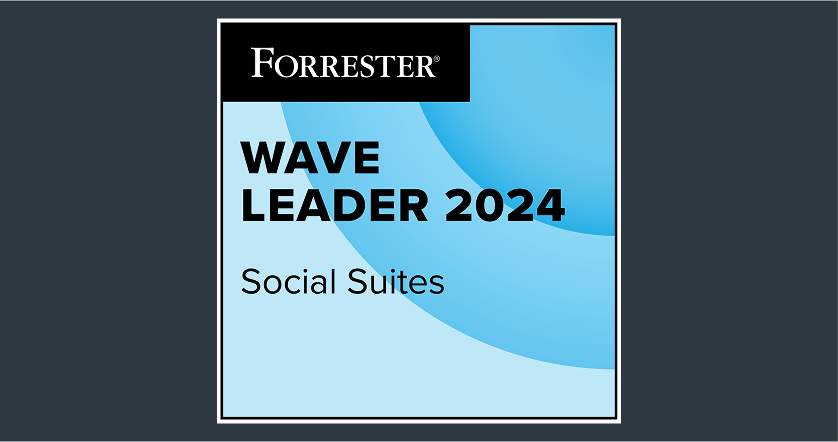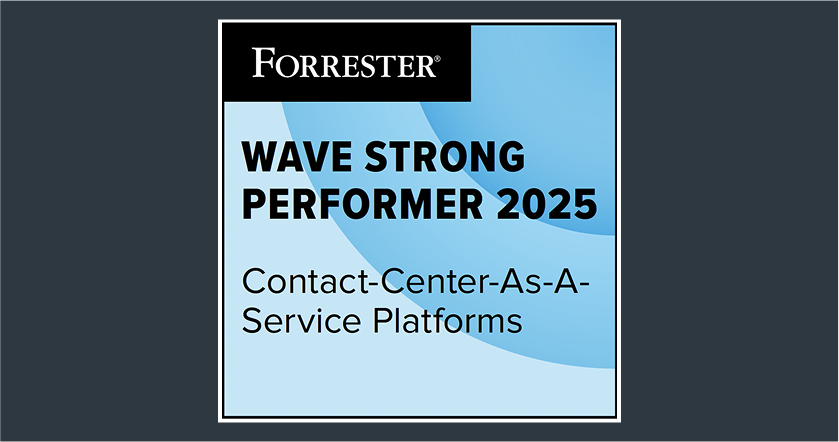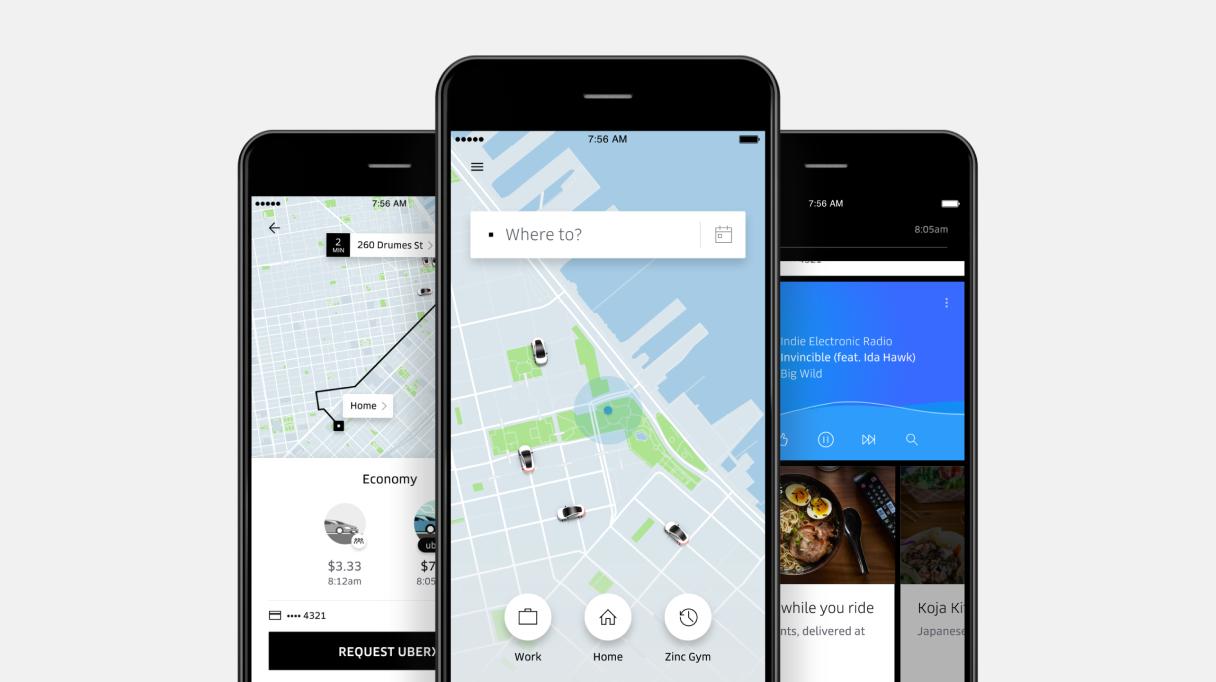Customer loyalty is the outcome of a long-term relationship between a brand and its customers, generated over time by building trust, upholding consistency and delivering genuine value. It’s the key factor that keeps customers coming back, even when competitors are just a click away.
Loyal customers make repeat purchases, increase lifetime value and amplify your brand through positive word-of-mouth. Conversely, a lack of customer loyalty can erode revenue, increase customer churn and increase the cost of acquiring new customers.
Take Tesla. The brand has built strong customer loyalty and cultivated a deep customer connection through innovative technology, sustainability and an all-electric vehicle lineup. So, it is unsurprising that Tesla boasts an astounding net promoter score (NPS) of 97 — one of the highest in any industry.
Evolution of customer loyalty strategies
Customer loyalty strategies have come a long way from the simple, straightforward approaches of the past. Traditionally, brands leaned on a few key tactics to keep customers returning. These strategies focused on building customer connections and offering tangible rewards. Here’s a look at some of the classic techniques that were once the backbone of customer loyalty:
🎗️ Loyalty programs: Brands like American Airlines pioneered frequent flyer programs, rewarding customers with miles for repeat business.

🎫 Discounts and coupons: Retail giants like Sears used to send out coupon books, encouraging customers to return for their next purchase.

😇 Personalized service: Local businesses, like family-owned diners, thrived on knowing their customers by name and remembering their preferences.
👌 Quality assurance: Companies like Campbell’s built loyalty by consistently delivering high-quality products, so customers knew they could always count on the same quality standard.

📩 Direct mail: Reader’s Digest and similar companies sent out personalized mail offers, creating a sense of exclusivity and personal connection with their audience.

As technology advanced, the shift from face-to-face interactions to digital communication channels, the rise of data analytics and the growing demand for instant gratification have all transformed how brands approach customer loyalty. Although the fundamental idea of rewarding and recognizing loyal customers remains unchanged, the methods have become more sophisticated and technology-driven.
Customer loyalty vs. customer retention vs. brand loyalty
How is customer loyalty different from brand loyalty? And is customer retention a part of it? Let’s discuss.
While customer loyalty is about building an emotional connection that drives customers to choose your brand repeatedly, customer retention focuses more on keeping customers engaged and making repeat purchases.
Customer retention management focuses on maintaining a steady business flow by preventing customer churn, often through incentives. Brand loyalty, however, goes deeper, fostering a bond that turns customers into brand advocates. It goes beyond transactional relationships.
Now, where does brand loyalty fit in with customer loyalty? Let’s compare:
Factor | Customer loyalty | Brand loyalty |
Definition | A strong, trust-based relationship is formed by consistent positive experiences with a company or product. | A deep emotional connection to the brand itself, beyond just the product or service it offers. |
Focus | Focuses on the overall experience and value provided by the product or service. | Primarily driven by an affinity for the brand’s identity, values and reputation. |
Primary driver | Driven by customer satisfaction, quality and customer service excellence | Driven by the brand’s ethos, mission and emotional appeal. |
Examples | A customer repeatedly buys a product because of its reliability and excellent customer service. | A customer stays loyal to a brand like Apple due to its innovation, lifestyle appeal and brand prestige. |
Switching tendency | Customers may switch to competitors if product quality or service declines. | Customers are less likely to switch, as they are emotionally tied to the brand, even tolerating minor issues. |
Marketing strategy | Emphasizes product/service benefits, promotions and customer satisfaction metrics | Focuses on storytelling, brand identity and cultivating a loyal community around shared value. |
5 Key elements of consumer loyalty
A single factor doesn't define customer loyalty; it combines key elements that build a strong, lasting bond between a brand and its customers. Let's explore the foundational components that drive customer loyalty for enterprise companies:
1️⃣ Trust: Trust is central to any loyal relationship. It is built by consistently delivering on promises, providing reliable products and maintaining transparency in communication. Customers who trust your brand are more inclined to stick with you, even when competitors offer enticing alternatives.
2️⃣ Customer satisfaction: Customer satisfaction measures how well your brand meets or exceeds customer expectations. Providing high-quality products and personalized customer service makes customers feel valued, laying the groundwork for lasting loyalty.
3️⃣ Consistent engagement: Regular and meaningful customer engagement ensures your brand remains top-of-mind. Through personalized email campaigns, social media interaction, or a well-designed loyalty program, consistent engagement deepens relationships and can turn satisfied customers into devoted brand advocates.
4️⃣ Reliability: Customers need confidence that your brand will consistently deliver. Reliability fosters dependability, ensuring that customers continue to see your brand as the go-to solution for their needs.
5️⃣ Emotional connection Loyalty extends beyond transactional relationships. Creating an emotional bond through customer-centric strategies, compelling brand storytelling and fostering a community transforms a satisfied customer into a loyal one. This emotional engagement often leads to advocacy and brand evangelism.
Suggested Read 📖: How To Turn Your Customers Into A Community Of Brand Advocates.
Top 4 benefits of customer loyalty
Today, customer loyalty has evolved into a strategic advantage for businesses of all sizes, especially given the rising customer acquisition costs and fierce competition. Below are four key benefits that enterprises can enjoy by fostering strong customer loyalty:
✅ Improves customer lifetime value (CLV)
Customer loyalty plays a significant role in boosting customer lifetime value (CLV), which measures the total revenue you can expect from a single customer throughout their relationship with your business. According to Gartner Digital Markets, 25% of marketers keep CLV in their top five marketing metrics to assess and increase the efficacy of their outreach campaigns. Loyal customers contribute to higher CLV, ensuring a long-term revenue stream.
✅ Lowers customer acquisition costs
Acquiring new and high-value prospects is not only costly but even more challenging. According to Gartner, 70% of B2B sellers find it difficult to acquire customers digitally. Customer loyalty helps lower these acquisition costs. Their referrals and positive word-of-mouth reduce the need for heavy marketing investments to attract new customers, making loyalty a cost-effective growth strategy.
✅ Boosts conversion rates
Loyal customers already trust your brand. They are familiar with your offerings, making them more receptive to your messages. According to E&Y, loyal customers are significantly more likely to convert, with conversion rates ranging from 60% to 70%, compared to new customers, who typically convert between 5% and 20%. These higher conversion rates translate into more efficient and successful sales cycles.
✅ Enhances brand reputation
With 46% of buyers struggling to distinguish between two brands' digital experiences (according to Gartner Digital Markets), your brand’s reputation becomes a vital differentiator. Loyal customers who consistently have positive experiences with your brand amplify your reputation through word-of-mouth. They become brand advocates, defending your company against negative publicity and promoting your brand organically. This type of advocacy is not only more credible but also far more cost-effective than traditional marketing.
Related Read 📖: How should brands manage their online reputation
9 Ways to measure customer loyalty
You need to dive into the numbers to gauge the strength of your customer loyalty. Here are five key metrics to measure customer loyalty:
1. Net promoter score
The net promoter score (NPS) measures customer loyalty by asking: "How likely are you to recommend our product or service to others on a scale of 0 to 10?" Based on their responses, customers are classified into three categories:
Promoters (score of 9 or 10): Loyal, enthusiastic customers who actively recommend your brand.
Passives (score of 7 or 8): Satisfied but not as enthusiastic; they are less likely to spread negative feedback but also less likely to promote the brand actively.
Detractors (score of 0 to 6): Unhappy customers who may spread negative word-of-mouth and damage the brand's reputation.
The NPS is calculated using the following formula:
For example, if you receive 100 survey responses with 80 promoters, 10 passives and 10 detractors, the NPS would be 70 (80% promoters - 10% detractors). The passives are not included in the calculation, as they are considered neutral.
Learn How to improve the Net Promoter Score of your brand.
2. Customer lifetime value (CLV)
CLV is the total revenue expected from a customer throughout their relationship. A higher CLV signifies more value derived from each customer, boosting profitability.
3. Customer retention rate (CRR)
The retention rate, which is the percentage of customers who continue to do business with you over a period, is a crucial metric. A higher retention rate leads to steady revenue streams and reduced acquisition costs, providing a sense of security and stability.
4. Customer satisfaction score (CSAT)
This measures customer satisfaction with your product or service. High CSAT scores indicate positive customer experiences, which lead to repeat business. Read Top Techniques to Measure Customer Satisfaction
5. Churn rate
This metric is the percentage of customers who stop doing business with you over a period. A lower churn rate means better customer retention and loyalty.
Deep Dive 📖: 7 proven ways to reduce customer churn rate
6. Customer effort score (CES)
Customer effort score (CES) measures how easy it is for customers to interact with your company — whether through a purchase, support ticket or general interaction. It gauges customers' efforts to resolve their issues or complete tasks. Low-effort experiences are strongly correlated with customer loyalty.
Customers are typically asked to rate their experience on a scale from 1 (very easy) to 5 (very difficult). A lower CES score indicates a smoother, more efficient customer experience, which can lead to stronger loyalty.
7. Repeat purchase rate (RPR)
The repeat purchase rate (RPR) measures the percentage of customers who make a second purchase. This metric provides insight into the effectiveness of your retention strategies and is a direct indicator of customer loyalty. A higher RPR suggests that more customers are satisfied enough to return for additional purchases, a strong indicator of loyalty.
8. Customer loyalty index (CLI)
The customer loyalty index (CLI) is a newer composite metric that combines elements of NPS, RPR and CES to provide a holistic view of customer loyalty. It helps track loyalty by combining the likelihood of repeat purchases, customer recommendations and overall satisfaction.
CLI is usually calculated using a customer survey with questions like:
How likely are you to recommend us to others? (NPS)
How likely are you to buy from us again? (RPR)
How satisfied are you with our products/services? (CSAT)
The survey responses are aggregated to give an overall loyalty score. CLI is particularly valuable for tracking changes in customer loyalty over time.
9. Referral rate
This metric measures how often your customers are referring your brand to others. A higher Referral rate suggests that customers are loyal and active promoters of your brand. Referrals are crucial because they bring in high-quality leads at a lower cost than traditional marketing efforts. Referral rates are often tracked via referral programs or post-purchase surveys.
How to build customer loyalty and address customer churn
Before exploring strategies to build customer loyalty, remember that your competitors can easily replicate many of these approaches. The real differentiator isn’t just the strategy but how you execute it. Success lies in delivering an experience that deeply resonates with your customers, creating a distinctive bond that sets your brand apart in the long run.
👥 Personalize with behavioral data
Building strong customer loyalty begins with personalization and that’s impossible without leveraging a robust contact center CRM system. Personalized engagement relies on using behavioral data — such as browsing history, purchase patterns and interaction frequency — to craft tailored experiences that speak directly to your customers’ needs.
At the start of the customer journey, personalization might involve learning their preferences and making relevant recommendations. After a purchase, it means addressing customers by name, having a 360-degree view of their interaction history and anticipating their next move to offer proactive customer service. This level of personalization also extends beyond customer service into regular engagement, whether through targeted messaging or tailored content.
By focusing on personalized interactions aimed at helping customers, brands see a 16% higher impact on commercial outcomes than competitors who don’t personalize their approach.
Take Spotify, for instance. Its “Only You” feature nails personalization by creating playlists based on your and your friends’ music interests and playback history.

💡Pro Tip
Modern conversational analytics software empowers you to go beyond surface-level data and gain deep insights into customer interactions. You can drill down into each contact driver to understand the high-level reasons for customer outreach and the root causes behind those interactions.
From uncovering why customers are reaching out to identifying trending topics to analyzing variations in customer intent and sentiment across 100% of your conversations, conversational analytics offers a comprehensive view of your engagement data.

💪 Empower users with the online community
Accessibility and a quick issue-resolution process are key drivers of customer loyalty. While providing support through standard customer service channels is essential, you can take it a step further by creating an online customer community where customers can find answers to their issues and connect with fellow users. These forums foster organic engagement and as the community grows, it becomes a powerful tool for customer self-service and empowerment.
Without heavy involvement from your support team, customers can help each other, turning the community into a cost-effective promotional strategy. Over time, this can transform engaged customers into passionate brand advocates.
Achieve community-led growth with Sprinklr
Sprinklr’s community management software enables your customers to ask and answer questions, participate in discussions and provide product-related feedback. It also plays a crucial role in empowering moderators, allowing them to monitor and respond to unanswered queries, ensuring the smooth functioning of the community.
In addition, you can encourage customers' active participation and turn them into advocates by acknowledging their work through leaderboards, points and coveted badges.

👉 Take the First Step:
🎁 Reward with tailored loyalty programs
Loyalty programs are a tried-and-true approach to boosting customer retention and building long-term relationships. Explore different loyalty programs, such as redeemable points systems, cashback rewards, shipping benefits or exclusive VIP memberships.
For example, Sephora’s Beauty Insider program leverages a tiered program where customers earn points on every purchase, unlocking more rewards as they move up the tiers. This incentivizes frequent purchases and gives customers a sense of achievement.

Source
📮 Send a hand-written note with purchase
In today’s digital world, handwritten notes are a sincere gesture of appreciation, far more thoughtful than automated texts or emails. It engages multiple senses — sight, touch, even smell—creating a more memorable experience. This personal touch strengthens emotional connections and leaves a lasting impression.
The best part? It's still relatively uncommon, giving your brand a unique edge and helping you stand out meaningfully.
🤖 Streamline interactions with omnichannel chatbots
Customers today expect fast, consistent and seamless interactions with your brand, no matter the platform they use. You can deliver uniform, real-time customer service that meets these expectations by deploying chatbots across various customer touchpoints — such as your website, mobile app and social media channels. This ensures a seamless experience, regardless of how or where your customers interact.
💡 Did you know?
You can now enhance user journeys with dynamic, conversational experiences powered by generative language models. Here’s how Sprinklr does it.
Sprinklr’s AI+-powered bots go beyond traditional customer service automation by dynamically handling requests and resuming conversations even after interruptions, offering a truly human-like experience. Even better, you can build these chatbots once and deploy them across more than 25 channels (including voice) in over 100 languages, ensuring consistent and scalable customer interactions.

🏨 Host exclusive events
When customers feel valued and part of your brand's journey, they are more likely to stay loyal. Exclusive events give your customers special access and an environment where they can engage directly with your brand. This deepens emotional connections, making customers feel like they're part of an inner circle, which enhances their loyalty. Additionally, such events offer valuable opportunities to gather direct feedback, making attendees feel heard and appreciated, further strengthening their attachment to your brand.
🙌 Build empathetic conversations but don’t overpromise
It's common for customers to ask for discounts, special offers or additional services and to compare what they get from your competitors at similar price points. In such situations, it's crucial to clearly and empathetically explain why your brand may not offer certain things while emphasizing the unique value you provide.
Instead of trying to match every competitor's offer, focus on what sets your brand apart. Highlight the benefits your customers receive, such as superior service, product quality, or long-term support.
Equally important is training your sales and service teams to handle demanding customers professionally. Ensuring they respond with empathy while avoiding overpromising things your brand cannot deliver is critical to maintaining trust. Overpromising and underdelivering can damage customer loyalty, whereas setting realistic expectations builds a stronger, more trustworthy relationship.
📋 Improve with customer feedback
Managing customer feedback is a powerful strategy for building and maintaining loyalty. When you actively seek, analyze and act on customer feedback, you show your audience that their opinions matter.
Consider how Starbucks uses its “My Starbucks Idea” platform, where customers can suggest new products, services or store improvements. By actively listening to and implementing popular ideas, Starbucks makes customers feel heard and valued. This engagement fosters a deeper connection, turning satisfied customers into loyal advocates.

How emerging technology is enhancing consumer loyalty
Building customer loyalty in today's competitive market goes beyond offering unique products or services. It's about creating an emotional connection with your customers. Emerging technologies, such as AI, ML and advanced customer interaction analytics, are key to making that happen. In fact, 63% of executives in a recent Verizon study see these technologies as essential for boosting customer loyalty.
Leah Leachman, Senior Director Analyst at Gartner, advocates for a "minus mindset"— simplifying customer interactions by reducing complexity and eliminating unnecessary communications. This approach, powered by advanced analytics, helps identify loyal customers and pinpoints opportunities to deliver exceptional experiences.
However, integrating technology to deepen emotional connections remains challenging for some, especially in consumer goods and financial services. To address this, executives focus on empathy training for agents and invest in advanced analytics tools for deeper consumer insights. The goal? Combine empathy with technology to create personalized experiences that foster strong, lasting loyalty.
As businesses expand across multiple channels, delivering seamless, personalized interactions is more challenging than ever. Many organizations struggle with fragmented data and siloed communication, leading to missed opportunities and customer churn.
Sprinklr Service solves this by centralizing all interactions across 25+ channels, from social media to messaging apps, ensuring a unified and consistent customer experience. With AI-native architecture, Sprinklr enables real-time support, proactive outreach and personalized engagement so that no customer request is overlooked.
Leverage conversational analytics, dynamic chatbots and 360-degree customer views to deliver faster, more empathetic responses and boost satisfaction. Schedule a demo today for a personalized walkthrough!
Frequently Asked Questions
Thank you for contacting us.
A Sprinklr representative will be in touch with you shortly.
Contact us today, and we'll create a customized proposal that addresses your unique business needs.
Request a Demo
Welcome Back,
No need to fill out any forms — you're all set.









